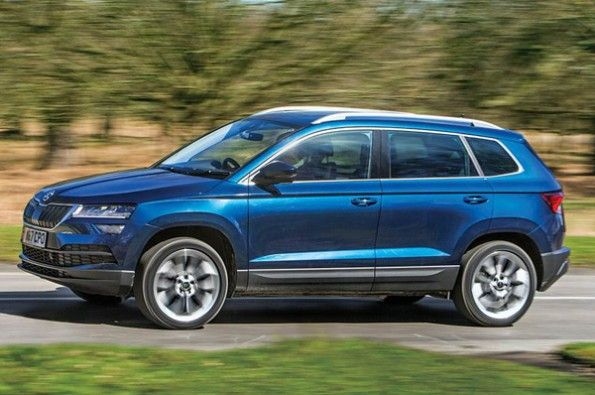Despite the Yeti being a capable, solid product, there were hardly any takers for it - in the seven years it was on sale in India, Skoda sold under 5,000 Yetis. Its quirky design wasn’t SUV enough for the Indian buyer, so this time, Skoda took a more conventional approach with the Karoq.

The Karoq looks like a scaled-down Kodiaq – it’s got a more conventional shape that is more in line with Skoda’s new SUV design language. Indian buyer will surely appreciate the well-proportioned and sharply cut lines of the Karoq. In fact, when you look at the two from the front, it’s hard to distinguish the Karoq from the bigger Kodiaq. The Karoq has a dual-slat grille with the indentation below the Skoda logo, slim headlights with tiny fog lamps stacked below it and a full-width air intake in the lower bumper. Sure, this car’s overall look is nowhere near as distinctive as the Yeti, but it is a handsome SUV all the same.
The car is built on the VW Group’s universal MQB platform which underpins a wide range of models. It also gets the competent Haldex 4x4 system from the Kodiaq but the real test will be to see if this car has the breadth of talents the Yeti did off-road.
Practicality is what owners will want and the Karoq, in true Skoda tradition, has tons of it. The cabin comes with a large glovebox and lots of big cubbyholes. The seats are great and supremely comfortable, they offer superb underthigh support, making the Karoq cabin a hugely comfortable place to spend long hours in. Skoda’s VarioFlex seating system will free up space even for taller passengers in case they feel a lack of knee room. This cleverly designed seating arrangement allows you to slide, recline and even remove each rear seat unit individually.

Luggage space is a generous 521 litres with all seats in place. Top-end variants will be fully loaded and should come with a massive 9.2-inch touchscreen, LED ambient lighting, a 12-speaker audio system, wireless charging for smartphones, a powered tailgate and a huge panoramic sunroof, along with a lot of other equipment. The cabin is full of top notch materials and the cabin exudes the same sense of quality you experience in premium Skodas like the Kodiaq and Superb.

The car we tested was powered by a 2.0 TDI diesel engine which makes 150hp and a healthy 340Nm of torque. The India-spec car will only get DSG automatic transmission though. This latest TDI motor is extremely responsive, and while there is a bit of turbo lag initially, but it quickly disappears once you get past 1,500rpm. The car’s mid-range is particularly punchy, so you’ll be able to overtake quite easily. The Karoq doesn’t have the agility of the Yeti though. The steering is light and decently accurate but a bit numb when it comes to feel.
On smoother surfaces, the SUV rides superbly, and it handles undulations with poise - it absorbs dips and bumps, and the suspension too works silently.

Should I buy one?
Overall this is a great car, but rumours suggest that it won’t be cheap when it goes on sale in the first-half of 2019. But it will be cheaper than the Kodiaq. If you don’t need the extra row of seats, the Karoq, in fact, offers almost everything the Kodiaq does but at a significantly lower cost.









